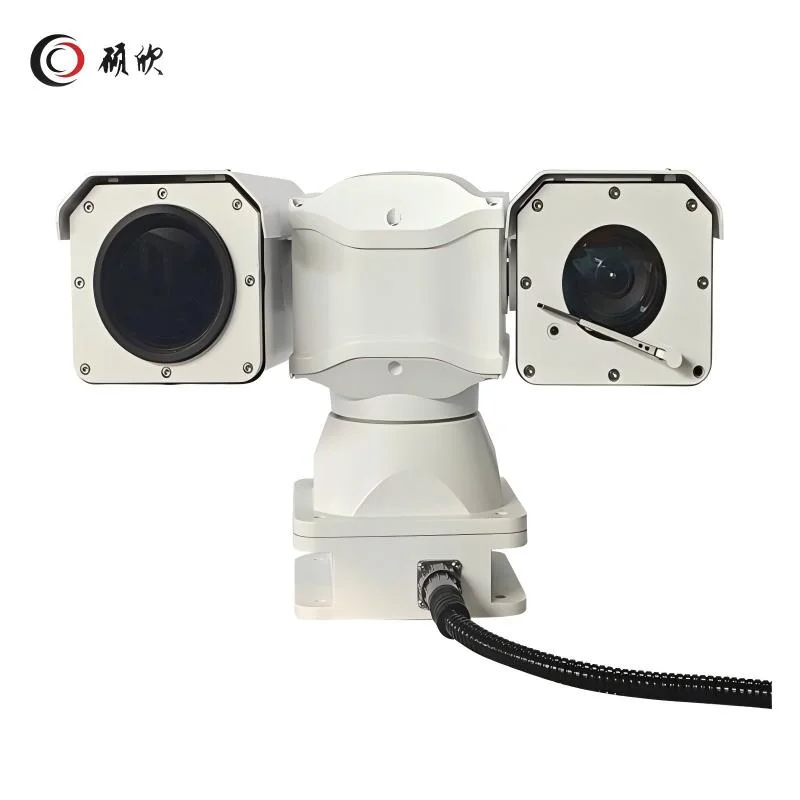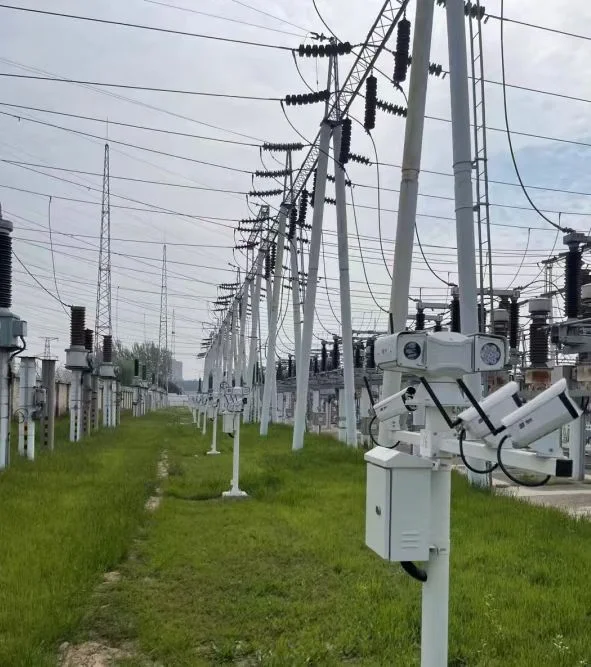What Are the Main Problems in Substation Monitoring?
Electrical substations are super important for sending out power. But they face many risks. These places are often far away, hit by harsh weather, and hold dangerous high-voltage gear.
How Do Safety and Weather Risks Hurt Operations?
Break-ins at substations can cause power cuts, money losses, or even harm to people. Thieves stealing copper, vandals, or saboteurs are big worries. Also, weather issues like hot transformers or rusty parts can start fires or break machines. Watching both the site’s edges and its gear all the time is key to keeping things running well.
Can Cameras Make Substations Safer?
Yes, good cameras turn basic security into active protection. But not every camera system works the same or gives clear results.
Why Is Live Video and Heat Detection So Important?

Live video lets you see break-ins right away. But spotting hot equipment or early fire signs needs heat-sensing cameras. You need both clear pictures and heat detection to watch substations well, especially when it’s dark and regular cameras don’t work.
What Are the Flaws of Normal Cameras?
Regular CCTV cameras don’t see heat and often miss wide areas. They can’t catch things like hot spots or work well in fog or at night. This leaves gaps in your Substation Monitoring plan.
What Is a Bi-Spectral PTZ Camera and Why Does It Help?
A bi-spectral PTZ camera mixes two types of images: clear video and heat-based infrared. This dual setup lets you see both regular visuals and temperature changes with just one device.
How Does Dual Imaging Make Monitoring Better?
By mixing sharp video with heat detection, these cameras spot dangers you can’t see, like a transformer getting too hot or someone hiding in the dark. This gives a fuller picture of your substation’s safety and health.
Why Pick Bi-Spectral PTZ Cameras for Substation Monitoring?
Bi-spectral PTZ cameras are made for tough places like substations, where watching both security and equipment is a must.
How Does Combined Video and Heat Imaging Improve Results?
You get two views at once: clear video shows what’s happening, and heat imaging catches problems before they grow big. This makes monitoring stronger.
Can These Cameras Spot Intruders Better at Night or in Bad Weather?
Yes, for sure. Heat sensors don’t need light—they pick up body heat or machine hot spots in total darkness, thick fog, or heavy rain.
How Do They Help Check Equipment Health?
Heat detection spots hot cables, insulators, or transformers before they break. This helps plan repairs early, saving time and money.
Why Is Pan-Tilt-Zoom Needed for Big Areas?
Substations cover wide spaces with many spots to watch. PTZ cameras move side to side, up and down, and zoom in, giving you a full view of everything.
Can These Cameras Follow Moving Things on Their Own?
Yes, many models track suspicious movement across areas without someone controlling them. This is great for substations with no staff on-site.
Which Bi-Spectral PTZ Camera Solutions Work Best for Substations?
For top Substation Monitoring tools that give strong dual-image results and last in tough conditions, check out Shuoxin’s lineup. Shuoxin has years of experience making smart cameras for places like substations.
How Are These Cameras Built for Tough Substation Settings?
Substations need gear that handles extreme weather, dust, rust from chemicals, or salty air while working all day, every day.
What Features Make Them Trustworthy in Harsh Places?
These cameras have IP66-rated cases that block water and dust. They also have anti-rust coatings to last longer. A voltage stabilizer keeps them working even when power jumps, cutting repair needs and boosting steadiness.
Do They Offer Smart Alerts and Work with Alarm Systems?
Yes, they have smart video tools like motion alerts, line-crossing warnings, and fire detection. These connect easily to your current alarm setups for fast responses.
Where Can You Use These Cameras in a Substation?
Bi-spectral PTZ cameras are flexible and work in many spots within a substation.
Can They Stop Break-Ins at the Edges?
Heat imaging spots people hiding behind bushes or fences at night, making it great for catching intruders before they cause trouble.
How About Checking Equipment Heat Early?
Placed near transformers or switchgear, these cameras track temperature shifts that show wear or overload, helping you fix things before they stop working.
Are They Good for Spotting Fires?
Yes, heat sensors catch unusual heat patterns before smoke shows up. This makes them awesome for early fire warnings in control rooms or cable areas.
Do These Cameras Fit with Your Current Systems?
Adding new gear shouldn’t mess up your setup. These bi-spectral cameras work smoothly with standard industrial networks using protocols like ONVIF and RTSP.
Do They Work with SCADA Systems and Central Platforms?
Yes, they connect to SCADA systems and central video platforms. This lets you see feeds from many sites in one easy dashboard, making work simpler for your team.
Are Bi-Spectral Cameras Cost-Smart Over Time?
The upfront cost pays off fast. You save by avoiding downtime, cutting repair expenses with early detection, reducing false alarms with smart alerts, and meeting safety rules better.
How Do They Lower Repair Costs Long-Term?
By spotting issues early with heat checks, you avoid pricey emergency fixes. Planned repairs are cheaper and help equipment last longer.
Do They Help Meet Safety Rules?
Yes, these cameras record events with time stamps and send auto-alerts. This helps you follow safety laws easily and keeps your site accountable.
Which Camera Model Fits Your Substation Best?
Picking the right camera depends on your station’s size, staffing, weather exposure, detail needs, threat distance, and budget.
FAQ
Q1: Why are bi-spectral PTZ cameras better than regular CCTV systems?
A: Bi-spectral PTZ cameras mix clear video with heat imaging in one device. This lets you see visuals and spot heat issues at the same time, something regular CCTVs can’t do.
Q2: Can these cameras handle power changes in remote areas?
A: Yes, they use a voltage stabilizer to manage unstable power. This keeps them working well, lowers repair needs, and ensures steady performance.
Q3: Do these cameras work with existing SCADA platforms?
A: Yes, they use standard protocols like ONVIF and RTSP. This makes them easy to connect with most SCADA systems used in industrial sites today.


